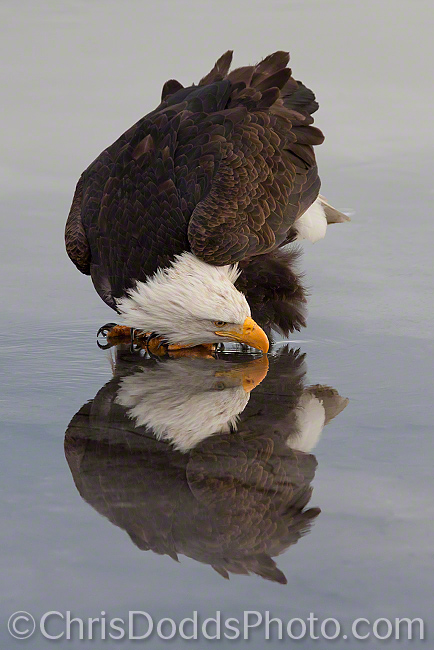 Pallid Bat REFLECTION (Antrozous pallidus Chauvre-souris blonde) Amado, Arizona, USA. Image Copyright ©Christopher Dodds. Canon EOS 1DX mark II, 100-400mm f/4.5-5.6 L IS II USM @300mm. Jobu Designs Algonquin Tripod & Jobu Jr. 3 Photo Trap and four flash set-up. ISO 500, f/18 @ 10 second exposure in Manual mode. PURCHASE A PRINT or LICENSE IMAGE FOR PUBLICATION HERE.
Pallid Bat REFLECTION (Antrozous pallidus Chauvre-souris blonde) Amado, Arizona, USA. Image Copyright ©Christopher Dodds. Canon EOS 1DX mark II, 100-400mm f/4.5-5.6 L IS II USM @300mm. Jobu Designs Algonquin Tripod & Jobu Jr. 3 Photo Trap and four flash set-up. ISO 500, f/18 @ 10 second exposure in Manual mode. PURCHASE A PRINT or LICENSE IMAGE FOR PUBLICATION HERE.
I'm just back from my Arizona bat workshop, and thought I would share one of the techniques we use to photograph bats and their reflections when they fly over a pond to drink water. It really is simpler than you might think; first, we set-up four flashes to light the bat from the front, then we set-up the phototrap to trigger the flashes every time a bat flys through an infrared beam. This set-up is not connected to our cameras at all; the cameras are set-up on tripods and focused at the exact same place as the infrared beam which triggers the flahes. Exposure was set manually to ISO 500, f/18 and 10 seconds. A remote trigger release is locked on, and the camera is set to make continuous ten second exposures, one after another. The images are mostly black frames, with images of bats captured every time they fly trough the beam and trigger the flash.
So, why not trigger the camera and flashes together? Because there are several different species of bats that frequent the pond and each of them flies at different speeds. Triggering the flash is the best way to ensure anything flying through the infrared beam is frozen at exactly that point; resulting in a perfectly sharp image.
If you would like to learn more, and perfect your phototrap set-ups, join me, Christopher Dodds, at "The Pond at Elephant Head" for an incredible high-speed bat photography workshop. Bats are some of the most misunderstood creatures on earth and there aren't many photographers out there photographing them. I've designed this workshop with only three participants and enlisted the help of Phototrap inventor, Bill Forbes, to ensure you get the images I would be proud to call my own. Learn how to use the Phototrap and high-speed flash photography to create stunning action images on your own. Learn more Here.

